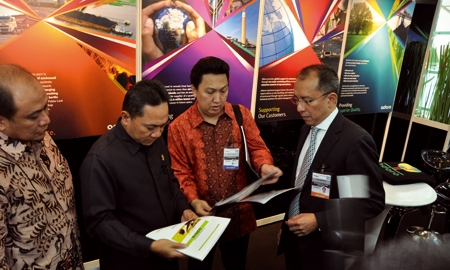Indonesia has some of the richest deposits of coal, gold and copper in the world. High in the mountains of Papua province, in the eastern part of the country, is the world’s largest gold mine and second-largest copper mine, but in Sumatra, in the south, there is a resource of greater economic value – coal.
Mining accounts for more than 10% of Indonesia’s GDP, and the sector is growing fast. In its 2012 first quarter report on the industry, British Monitor International (BMI) says it expects the industry’s value to reach $147 billion in real terms by 2015 – almost double that of 2010.
Coal mining is fuelling this rapid pace of growth. BMI forecasts coal production will reach 816 million tons by 2015, an annual average growth of 17.8% from 2010 levels.
Indonesia is already the world’s leading exporter of coal for power stations, with much of what it produces going to feed the voracious demand for energy in the rapidly expanding economies of China and India. Last year, India overtook Japan as Indonesia’s biggest customer for coal, and demand from China is expected to double over the next five years. Other countries seeking to source their coal from Indonesia include Kenya, Bangladesh and Pakistan.
As production is ramped up and new mines are opened in response to accelerating demand, there is a need for greater investment to sustain the sector’s expansion. The government expects mining investment to reach $6 billion this year, and has brought in new mining regulations to improve certainty for investors.
“We have been exploiting oil, gas, and coal and minerals such as nickel, iron ore, copper and gold. We cannot continue this way for too long, because Indonesia has to transform itself into a human capital economy.” Bob Kamandanu, Chairman of the Indonesian Coal Mining Association |
In January, President Susilo Bambang Yudhoyono ordered a review of all mining permits issued by local governments in a bid to enhance transparency and accountability in the sector.
Satya Yudha, a member of Commission VII, which oversees energy and mines at Indonesia’s House of Representatives, says many permits have been issued more than once by the different heads of regions, especially after new governors have been elected.
“There is a lot of flexibility by the local governments, and this makes the mining sector a bit messy compared to oil and gas. But if we have common goals between local and central governments and a good integration among the ministries we will have a positive outcome,” he says.
Last month, the government gave a clear indication that Indonesia intends to retain more of the profits from mining by rebalancing investment in the sector more towards domestic investors. A surprise change in the rules, announced in March, will limit foreign ownership of mines to just 49%.
The Energy Ministry has also demanded a 4% increase in the amount of coal supplied for domestic consumption to 82 million tons. Indonesia exports most of its natural gas, and so needs coal to drive its own power stations.
And in a further move to boost revenue from mining, the government wants to see coal and minerals processed into added-value products before export, and plans to ban shipments of raw coal material by 2014.
Bob Kamandanu, Chairman of the Indonesian
Coal Mining Association, says: “We have been exploiting oil, gas, and coal and minerals such as nickel, iron ore, copper and gold. We cannot continue this way for too long, because Indonesia has to transform itself into a human capital economy.
“I am not proud of Indonesia being the number one coal exporter,” he adds. “We would like to see Indonesia using its own coal. Indonesia needs energy, fuel and strength to take off, and mining is part of the backbone of Indonesia right now.”
He says more exploration is needed and greater use of technology. Indonesia has one of the largest reserves of coal bed methane in the world – a potential 453 trillion cubic feet, which is more than double the country’s natural gas reserves.
“We have mostly low rank coal. We have to employ coal conversion technology in which this coal becomes methanol, a cleaner fuel. Everybody has been talking about this technology but nothing has been done yet. This will ensure the energy efficiency of Indonesia.”
Syahrir AB, Executive Director of the Indonesian Mining Association, says greater investment is needed in exploration so the country’s mineral wealth can be more fully exploited. “I have already asked the central government why we don’t explore our potential in gold, bauxite and copper. If there is no exploration, there is no exploitation.”
Mr. Kamandanu also has strong views on mining standards and CSR initiatives, which he believes are best led by the largest mining companies, which control 80% of the industry.
“The small operators do not design mining well... They see black coal and they rush and dig, the walls collapse and then they leave.”
For CSR to be truly effective, co-ordination is needed. “There are about 200 or 300 companies at the moment and each company has CSR money. If we put them altogether, that is billions of dollars. We need a nationwide program. For example, in Kalimantan, the number of people who are graduating from elementary school is two million, and by enforcing the CSR, they can go to high school and then go to university. We need these programs nationwide. We could have a mining fund to transform Indonesia’s human resources. We do not mind being charged more if it is going to transform things.”

0 COMMENTS